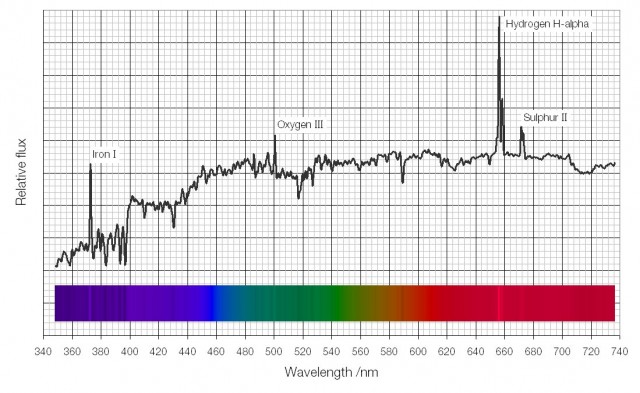2007
The first ever post on MrReid.org, on August 30th 2007, was about the Great Blue Hole, and like a number of early MrReid.org posts was posted mainly because the images involved looked great (see for example: the Cave of Swords, Scientists on Money and Big Vehicles). 2007 was the first time I ran a series of posts, in this case about orders of magnitude. There was also a lovely tiny little post about how bad scientists are at predicting the future.
2008
I started 2008 with one of my favourite post titles of all time: Fireball Throwing Robotic Catapult and continued with my second series of posts: Crazy Animals.
Some other favourite posts:
- Head tracking with the Nintendo Wii
- Waitomo glowworm cave
- The time traveller about cosmonaut Sergei Vasilyevich Avdeyev.
- Not following instructions gave the first glimpse into my life as a teacher.
In 2008 I was definitely focusing on quantity rather than quality, and most posts are pretty brief.
2009
Most 2009 posts were very short, and often focused around a single image (e.g. Jellybean universe, Teaching mutation, When physicists marry, etc.)
I think this post about UK postcodes was the first post based on my own original work, and this post about the Physics Factbook the first post in which I recommended someone else’s website. There was also a cautionary tale for physics teachers and lab technicians and some news about an accident at the LHC. During the Swine Flu panic I made a couple of relevant posts: one about putting the deaths due to Swine Flu into perspective and one about using infrared thermometer to monitor passengers for symptoms.
This post about Learning Styles being nonsense is something I’ve gone back to quite often in my work and this post about magnetic levitation on Japanese trains turns up quite often in my lessons. My Decimalising time post eventually ended up being turned into a talk that I gave at Ignite London. I’m disappointed that I didn’t do more with my series on Experiments That Actually Work.
Some other favourite posts:
- Car crash timeline
- Nobody fixes anything any more, a post about how nobody fixes anything any more.
- Some of the images from Floating in mercury have turned up in other people’s work, which is nice.
2009 was of course a sad year, due to the passing of Spacebat.
2010
2010 was a quieter year, with usually only a handful of posts per month as posts began to take on a more personal feel and tended to be based on something I’d done or made. See for example Fruit Gums and graphs (a follow up to Teaching statistics with Fruit Gums), Aspect ratio, Colour Cube, The Half-Time Kettle Effect quantified and How to make an extension cord.
I even took a trip into Pop Culture territory with Resolution and Strictly Come Dancing.
There were rant posts like The “compensation culture” does not exist, and even a special Christmas post: A public service announcement regarding paper snowflakes.
2010 was the first year I blogged about current research, with a post about finding secret nuclear reactors using neutrinos and a post about how people under- and over-estimate energy use and savings.
Some other favourite posts:
- Why grit roads?
- Rods from God
- How maths is different to science
- Why change the clocks?
- How far away is the horizon?
- Your eyes are not good at seeing blue
P.S. A man has to have a code.
2011
I rarely miss a chance to bash Greenpeace for being opposed to nuclear power on ideological rather than environmental grounds and their publication of some great infrared photographs of nuclear waste being transported was no exception. (I also rarely miss a chance to bash the Daily Fail either.)
A post I wrote about Choosing the “Right” A Levels has been consistently popular, and probably has more comments than any other post on the site. The post about Exam technique in physics is one I revisit every time a set of exams comes around.
The biggest event of 2011 for me was the accident at the Fukushima plant which resulted in a very popular post that got picked up by Kottke and NY Mag. This was very shortly after a post about Understanding radioactive dose and spawned two follow up posts: a timeline of the accident and a post about how Potassium iodide pills are radioactive.
July was a good month for posts, with a number of my favourites: Nobel prize winning sentences, a look at how ultraviolet ink works, a post about revetments and breakwaters (which I am a little obsessed with), a look at Electricity consumption in the production of aluminium, and a post about securing nuclear waste sites with Passive institutional controls.
This post about looking for rogue nuclear reactors didn’t win the Wellcome Trust Science Writing Prize but a post about Hacking QR Codes continues to get a lot of traffic. A post from August about liquid cooling for computer hardware always gets referenced in lessons about heat transfer and specific heat capacity and people continue to be surprised by the fact that lactose intolerance is actually the norm. The recent landing of the Curiosity rover on Mars has resulted in a lot of traffic for a post I wrote about Curiosity’s nuclear power source.
I liked all the posts from October, which might be a first: Why 80mph is not a good idea, Does your weight change in a lift?, Spherical ice cubes and surface area-to-volume ratio, R0, Dating a common ancestor and Looking at constellations from a different angle.
2011 was also the year of the first (and so far, only) MrReid.org guest post, by Leila Johnston, about the Challenger disaster.
Some other favourite posts:
- Datalogging the lesson
- An interesting fact about the Eiffel tower
- Who has spent the most time on the Moon?
- Why do we need leap seconds?
- Arbitrage at the speed of light
- A look at map projections and Tissot’s indicatrix
- An investigation of the UK’s energy mix and it’s import and export of electricity.
- Why does metal feel cold?
2012
January was a good month, another one where I liked all the posts I made: The cost of coins, Technetium-99 generators, Plug wiring colour scheme and a post about how Night vision works.
A stupid post called How big are pizzas? got far more attention than it deserved. A post about a problem with the RSA encryption algorithm didn’t get any attention, but is one that I’m particularly proud of, as I worked it all out myself and I didn’t see a good explanation anywhere else online.
The man who put his head in a particle accelerator ended up crashing my site when it got linked to by reddit. A post about different types of Smiths ended up being the rarest of posts – one without any links. I was really pleased with my post about the extent of shared genetic material between relatives, but I’m still not 100% sure my figures are correct.
A pupil inspired a post about Why you can’t open aeroplane doors in flight and a tweet inspired a very popular post about Why kettles boil slowly in the US. I wrote about classified space shuttle missions and where the best place to launch a rocket from is.
A post about Making art with the Travelling Salesman Problem led to a talk at the London Graphics Hackspace. During the 2012 Olympics a post about the metallic composition of the Olympic medals was particularly popular.
I was very pleased with a post about Separative Work Units, but I doubt it’s of interest to anyone but me. I also learned that You can see more than half of a neutron star and that red is not the only colour of blood.
Some other favourite posts:
- Why is Quincy, Washington so popular with tech companies?
- A look at different types of Orbits.
- The plane that shot itself down
- Why Vitamin D is not a vitamin.
- On the chance of dying in a game of Russian Roulette
- What is a ‘Retina’ display? made one pupil at school particularly mad.
- The Calutron Girls
- An explanation of how the Drinking Bird works.
The Future …
More of the same I guess; I hope you’ll keep reading.




